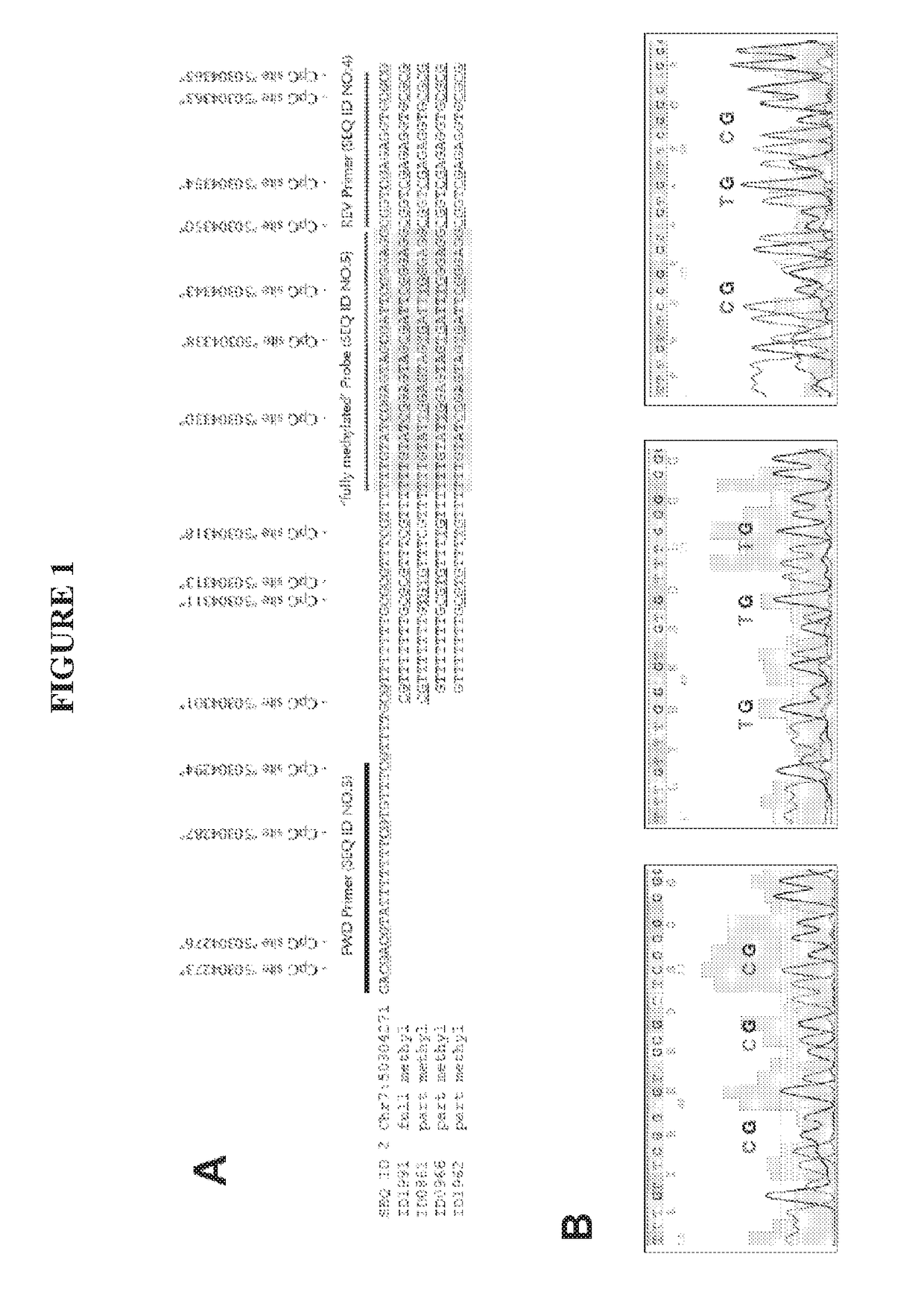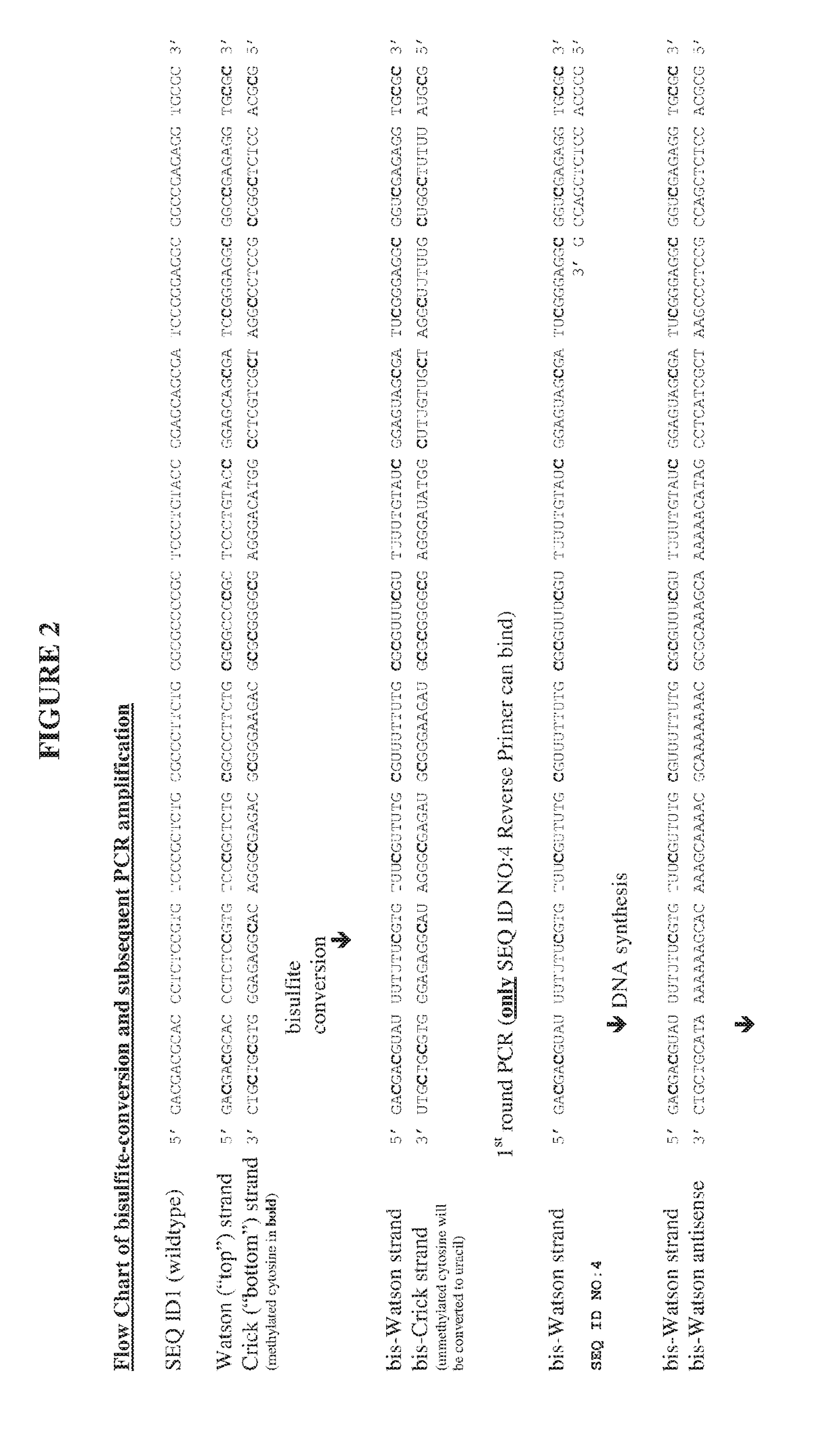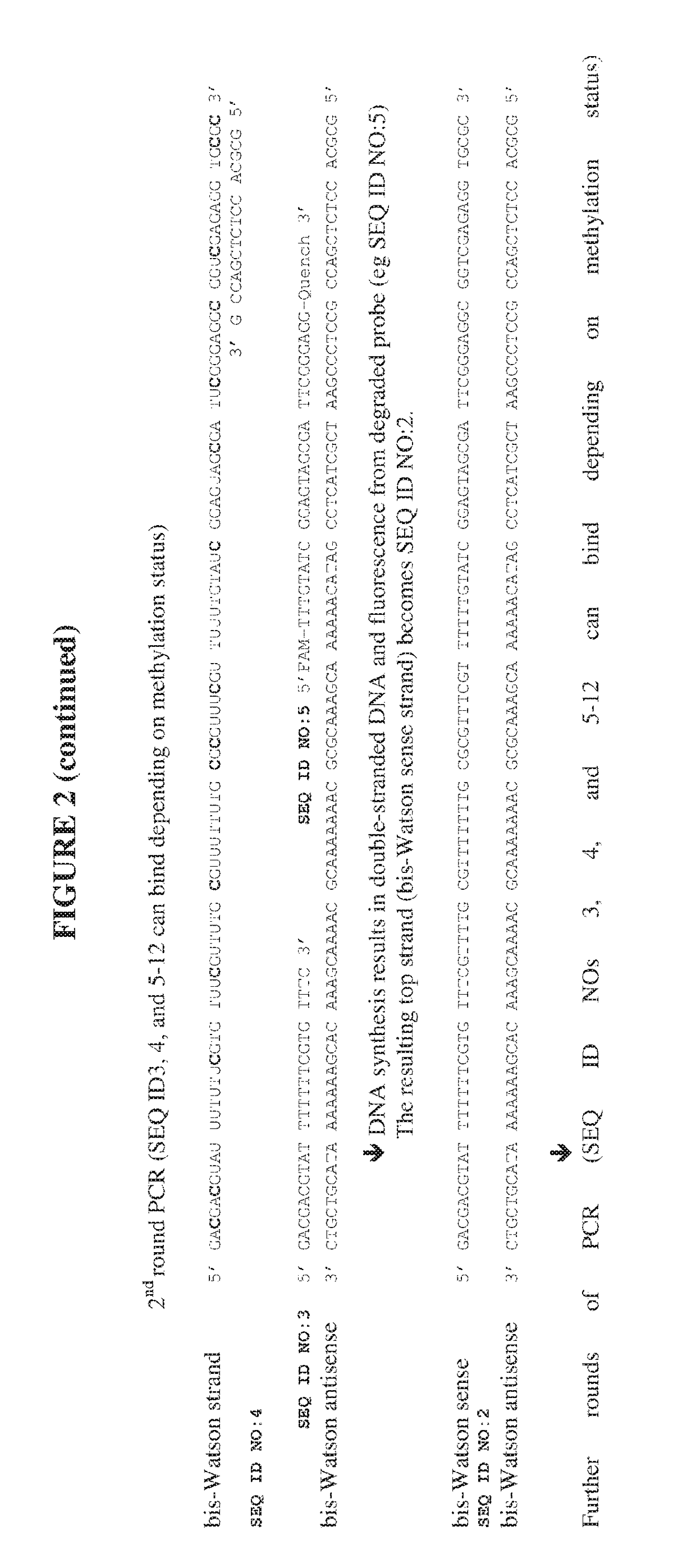Method for methylation analysis
a nucleic acid methylation and analysis method technology, applied in the direction of microbiological testing/measurement, biochemistry apparatus and processes, etc., can solve the problems of significantly reducing diagnostic sensitivity, skewing the results obtained, and not allowing the detection of partially methylated ikzf1 dna
- Summary
- Abstract
- Description
- Claims
- Application Information
AI Technical Summary
Benefits of technology
Problems solved by technology
Method used
Image
Examples
example 1
Identification of Partially Methylated IKZF1 DNA in Circulation of Colorectal Cancer Patients
[0301]Plasma was drawn from 2,109 colonoscopy-examined subjects including 134 cancer cases. Cell-free DNA was extracted using the QS CNA 4 mL plasma kit (Qiagen) as recommended by manufacturer on a QIASymphony. The resulting DNA was bisulphite-converted and purified using the EpiTect Fast and EpiTect Plus kits on QIACubes as recommended by manufacturer (Qiagen). The recovered bisulphite converted DNA was analysed as triplicate input in a multiplexed real-time PCR assay using the mastermix QuantiTect NoROX as recommended by manufacturer including oligonucleotides SEQ ID NO:3, SEQ ID NO:4 and SEQ ID NO:5 in addition to BCAT1 bisulphite-conversion and methylation specific oligos (SEQ ID NOs 13, 14 and 15, targeting the 102 nt amplicon residing on chr12: 24949058-24949159) and bisulphite conversion specific oligonucleotides SEQ ID NOs16, 17, 18, which targeted the control DNA gene, ACTB, on chro...
example 2
Detection of Partial Methylated IKZF1 in Colorectal Cancer Patients
[0304]Subsequently to the detection of partially methylated CpG sites embedded in the targeted IKZF1 amplicon sequence (SEQ ID NO:2), we generated a ‘degenerate’ IKZF1 5′-hydrolysis probe mixture consisting of eight different oligonucleotide sequences (SEQ ID NOs 5-12) with either a cytosine or thymidine base at each of three residue positions corresponding to the genomic coordinates Chr7: 50304330, Chr7: 50304338 and Chr7: 50304343. The oligonucleotide mixture was obtained during oligonucleotide probe production by incorporating an equal mixture of the two bases at each position.
[0305]DNA was extracted from additional 4 mL plasma from a sub-cohort (n=308) of the 2,109 patients described in Example 1. The recovered bisulphite DNA was analysed as triplicate input in a multiplexed real-time PCR assay using the mastermix QuantiTect NoROX as recommended by manufacturer including oligonucleotides SEQ ID NOs 3-18. The dete...
example 3
Alternative 5′-Hydrolysis Probes
[0307]“Degenerate” Probes with Modified Bases / Base Analogues
[0308]The eight probes used in Example 2 above could be replaced by a single “promiscuous” oligonucleotide that was designed to detect all 8 variably-methylated IKZF1 probe target regions. SEQ ID NO:19 would be used with SEQ ID NO:3 and SEQ ID NO:4 as primers, and replace SEQ ID NOs 5-12. SEQ ID NO:19 would anneal to the complementary strand of the variably methylated versions of SEQ ID NO:2. SEQ ID NO:20 could also be used in place of SEQ ID NOs 5-12 and would bind to the variably methylated versions of the strand shown as SEQ ID NO:2. Those skilled in the art would also realise that a methylation-specific PCR assay could be designed from the bisulfite-converted DNA strand that is the complement of that shown as SEQ ID NO:1. Such an assay would require different “promiscuous” oligonucleotide probes, and these two options are shown as SEQ ID NO:21 and SEQ ID NO:22.
SEQ ID NO: 19: Chr7: 5030432...
PUM
| Property | Measurement | Unit |
|---|---|---|
| Sensitivity | aaaaa | aaaaa |
Abstract
Description
Claims
Application Information
 Login to View More
Login to View More - R&D
- Intellectual Property
- Life Sciences
- Materials
- Tech Scout
- Unparalleled Data Quality
- Higher Quality Content
- 60% Fewer Hallucinations
Browse by: Latest US Patents, China's latest patents, Technical Efficacy Thesaurus, Application Domain, Technology Topic, Popular Technical Reports.
© 2025 PatSnap. All rights reserved.Legal|Privacy policy|Modern Slavery Act Transparency Statement|Sitemap|About US| Contact US: help@patsnap.com



